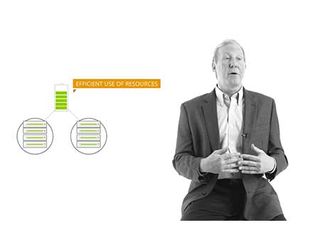Cloud Vs. Dedicated Platform: Which Is Best for Video Compression?

There has been a continued trend to push more network functions, including video compression, into datacenters and virtual cloud environments. While there are clear advantages for the virtualization of many network functions, there are also certain cases where there may be a cost or performance penalty.
Video compression systems are being used for a wide range of services today. Some key use cases include:
• Different content services: VOD (file based), and Live (linear streams)
• Different client devices: Set-Top, connected TV, PCs, laptops, tablets, smartphones
• Different codecs: MPEG-2, AVC, HEVC, VP-9
• Different resolutions and formats: SD, HD, 4K, HDR
• Different sources: Encoding (baseband input) vs. Transcoding (compressed IP input)
• Different encoding devices: Broadcast encoders, consumer cameras, professional cameras
• Different environments: Datacenters, headends, space or power constrained facilities
Video compression, with newer codecs such as HEVC and higher resolutions such as 4K (3840 x 2160 pixels), is very compute-intensive, particularly for live content or linear streams.
To achieve reasonable power, space, cabling, and reliability requirements, hardware acceleration is often used. This can be in the form of dedicated ASICs, FPGAs, GPUs, or embedded encoding hardware inside Intel CPUs or integrated smartphone chipsets. Therefore, video compression systems often utilize one or several of these technologies to achieve the necessary performance.
ARRIS is one company utilizing the latest ASIC compression chips in its new encoder/transcoder systems, the ME-7000 Converged Compression Platform. This platform is targeted for live encoding and transcoding applications for professional broadcast and distribution of full resolution TV programming.
The ME-7000 serves a wide range of consumer display devices, from smartphones to big-screen UHD displays. Currently, the platform is being used worldwide by operators such as Izzi Telecom in Mexico, Liberty Choice in Puerto Rico, and Eastlink in Canada.
By combining advanced hardware compression with general-purpose CPU computing, the ME-7000 offers advantages in power and space—some 10 to 15 times better than a pure NFV software approach for the HEVC HD live encoding/transcoding use case. Combined with reduced cabling, this improves long-term reliability while maintaining the flexibility and ease of use similar to other approaches.
For services such as file-based compression or for live content with lower resolution video or simpler codecs, pure software-based implementations can offer acceptable performance in a virtual environment. The key is to consider manufacturers that work with a partner that offer both software or hybrid software-hardware solutions to match the best technology with these types of use cases to best meet the needs of customers.
Additional Resources:
Hardware Based Transcoding for Linear Video
This infographic offers guidelines on how to get quality and efficiency at a lower total cost of ownership.
Solution Spotlight
Get a quick peek at the ARRIS ME-7000 in this Solution Spotlight
Click here to access the ARRIS ME-7000 content package


Multichannel Newsletter
The smarter way to stay on top of the multichannel video marketplace. Sign up below.










